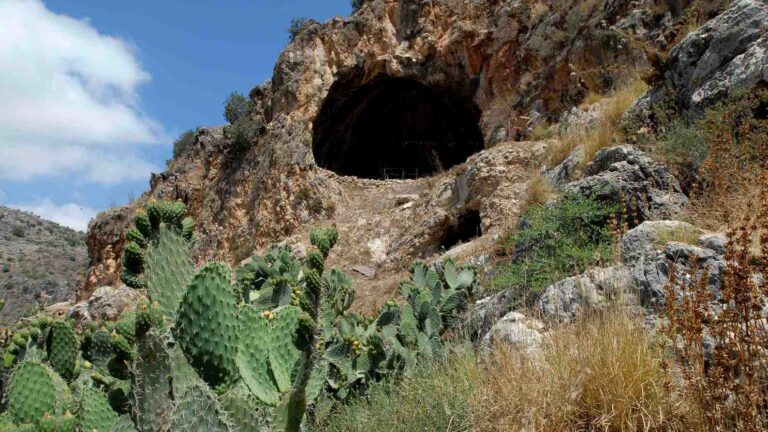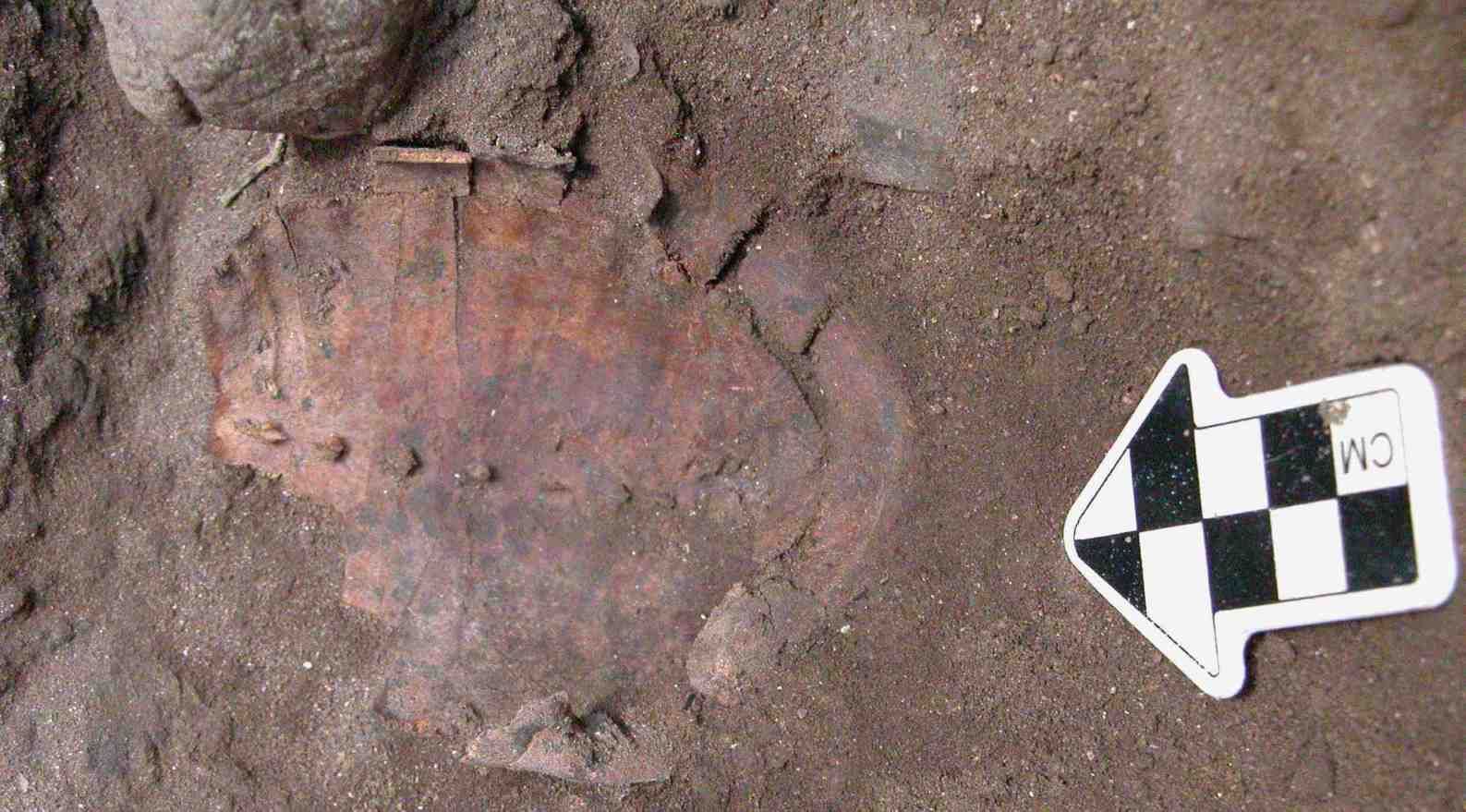One of 86 tortoise shells found in a unique burial site analyzed by Hebrew University archaeologists. Photo by Leore Grosman
As reported by Israel21C, July 6, 2016 (links in original):
The woman’s corpse was set on a bed of gazelle horn cores, fragments of chalk, fresh clay, limestone blocks and sediment.
Eighty-six tortoise shells were placed under and around her body, while seashells, an eagle’s wing, a leopard’s pelvis, a forearm of a wild boar and a human foot were placed atop the 1.5-meter-tall woman. A large stone was added to seal the site.
The Hebrew University archaeologist who discovered the grave in a cave on the bank of the Hilazon River in the Western Galilee in 2008 knew that it was not an ordinary funeral because three other grave pits found in the vicinity since 1995 did not have any of the unusual objects that this one did.
It took eight years for Prof. Leore Grosman from the Institute of Archaeology at the Hebrew University of Jerusalem and Prof. Natalie Munro from the University of Connecticut to identify the six stages of the mysterious funeral ritual. Their research was published in the journal Current Anthropology.
They believe the deceased may have been a shaman during the Natufian period, 15,000 to 11,500 years ago.
According to their reconstruction, the funeral began with the excavation of an oval pit in the cave floor. A layer of objects was cached between large stones, including seashells, a broken basalt palette, red ochre, chalk and several tortoise shells. These were covered by a layer of sediment containing ashes, flint and animal bones.
About halfway through the ritual, the woman was laid inside the pit in a child-bearing position, and special items including many more tortoise shells were placed on top of and around her. This was followed by another layer of filling and limestones of various sizes placed directly on the body. The ritual concluded with the sealing of the grave.
The archeologists speculate that the collection of materials and the capture and preparation of animals for the feast, particularly the 86 tortoises, must have been time-consuming.
“The significant pre-planning implies that there was a defined ‘to do’ list, and a working plan of ritual actions and their order,” said Grosman.








































No comments:
Post a Comment